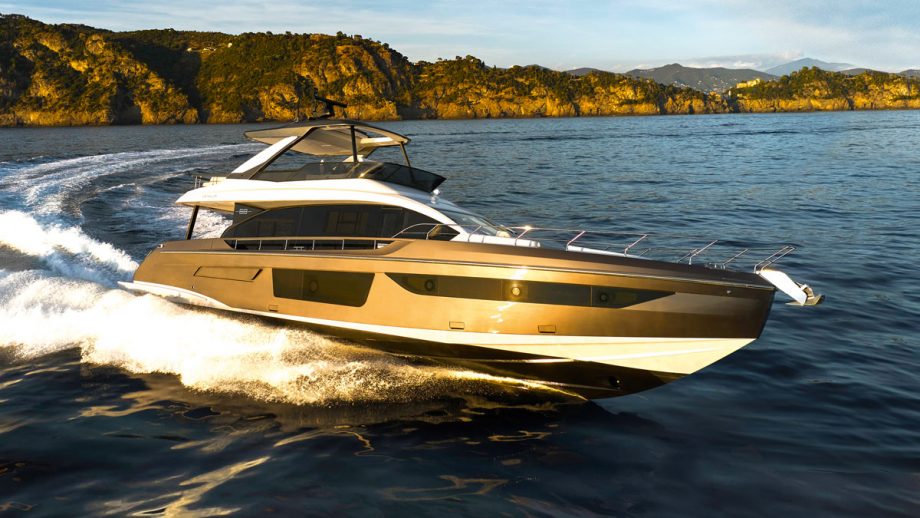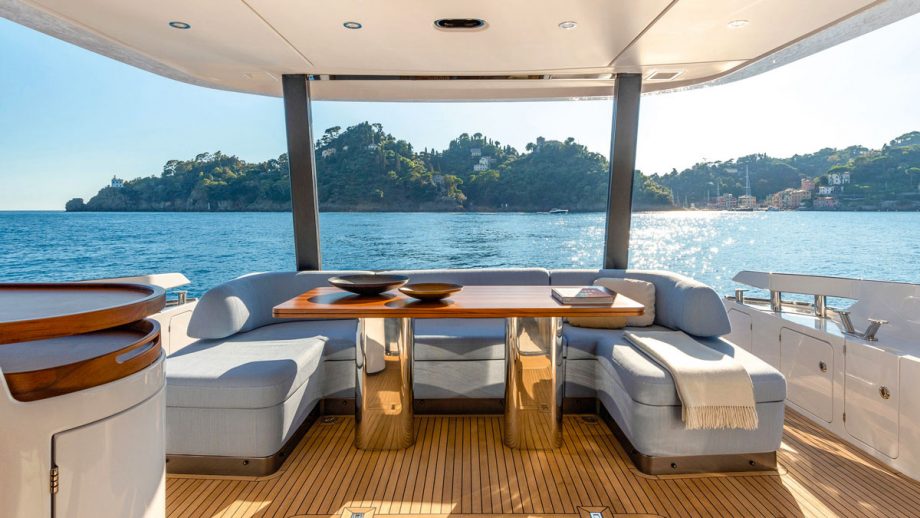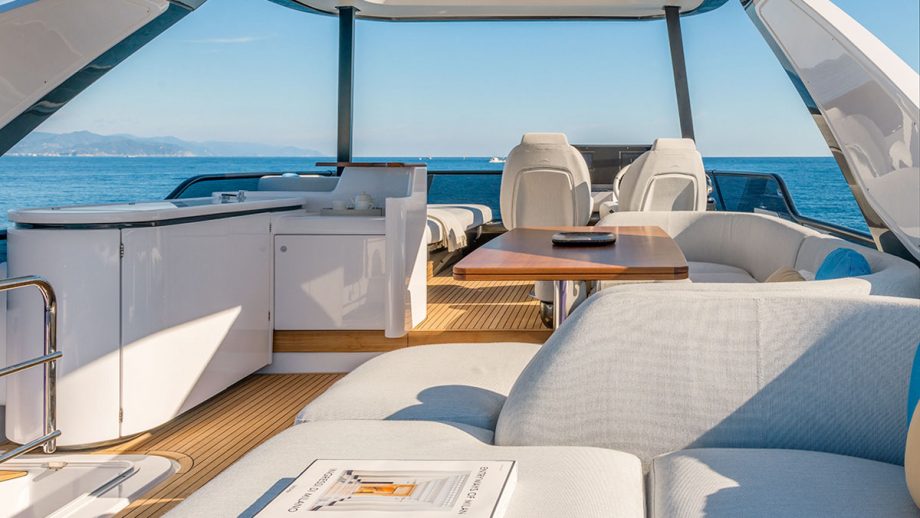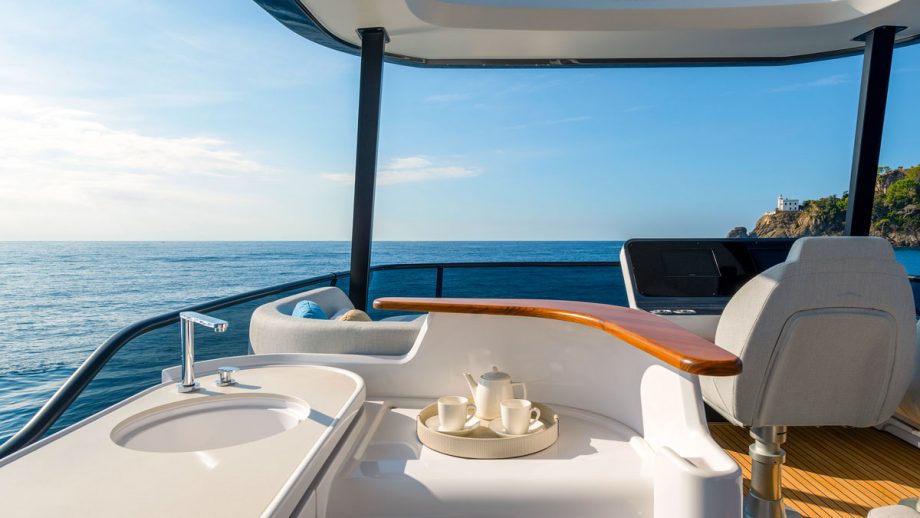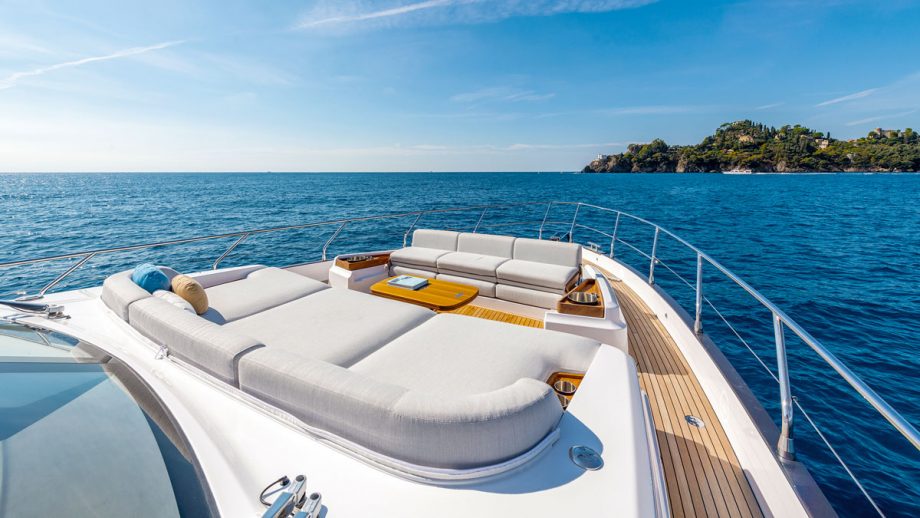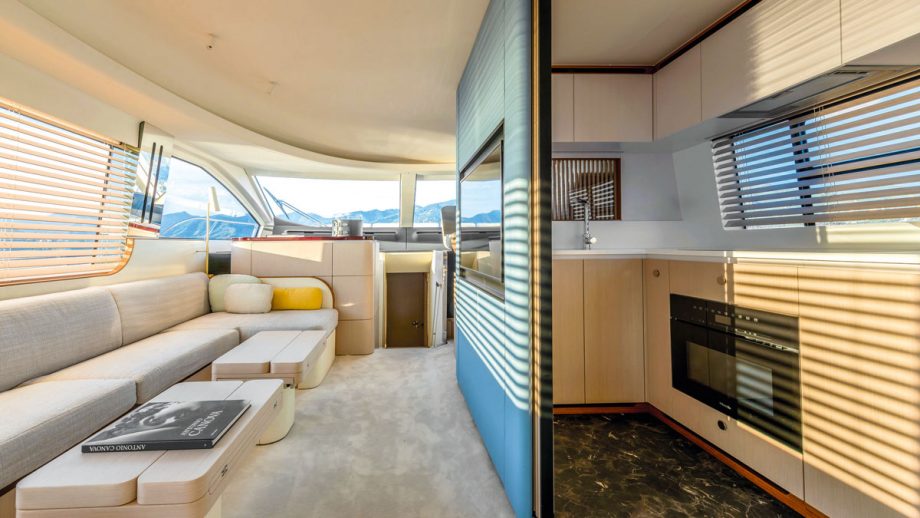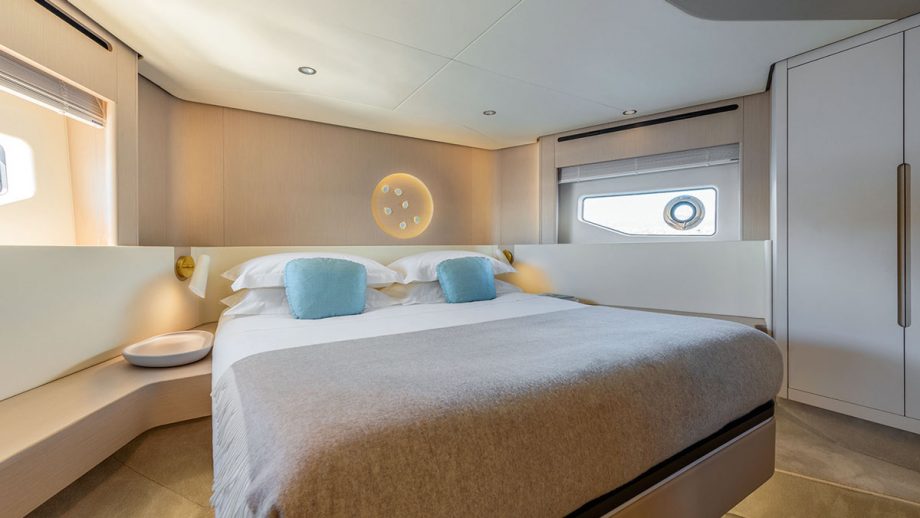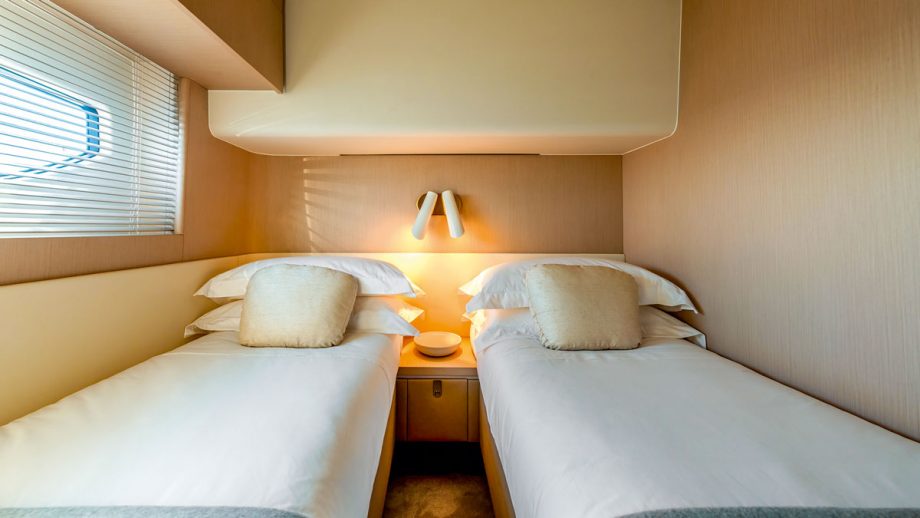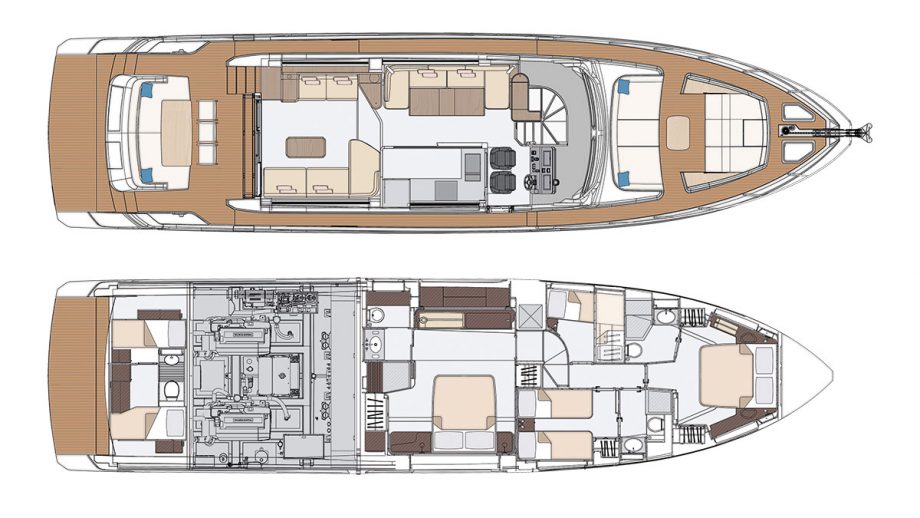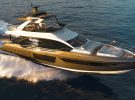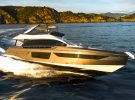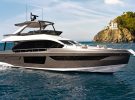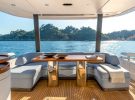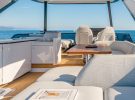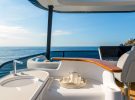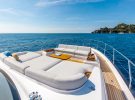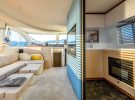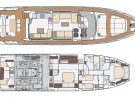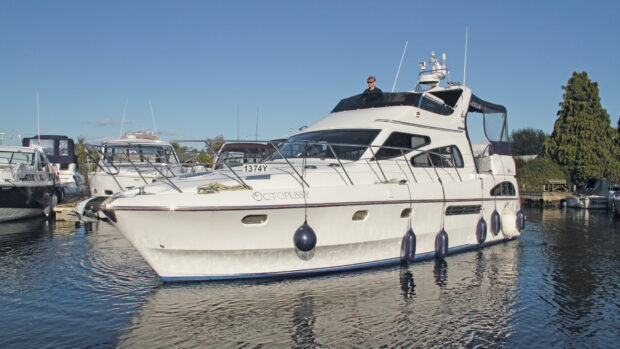Does Azimut’s new family flybridge live up to the Italian yard’s reputation for performance and efficiency? We take the Azimut 68 for an early morning spin to find out...
Two thousand horsepower and IPS drives felt like a perfect combination once we ventured out into the Baie de Cannes, with the morning sun already warming us through and no more than a light breeze to ruffle the surface of a rich indigo sea.
Make no mistake, the new Azimut 68, unveiled at last autumn’s long-awaited Cannes Yachting Festival, is a fully fledged luxury cruising machine, brimming with light and space, opulent upholstery, designer detailing and sensible stowage solutions.
But Azimut is a surprisingly performance-oriented brand. It’s not just its triple-engined S-Class boats and sleek Atlantis sportscruisers that like to get up and go. Throughout its product range the shipyard has been at the front of the queue whenever the engine builders come up with more horsepower, or a better drive system, or both.
And of course it’s never just about power – the Azimut 68’s hull design is a slippery medium-V from Pierluigi Ausonio, whose explorations into hydrodynamic efficiency with bulbs and wave-piercers, for Azimut and others, are cutting-edge.
At the same time the shipyard’s extensive – and expensive – use of carbon fibre for the superstructure, hardtop and part of the deck moulding not only saves weight, and thus fuel, but also keeps the boat’s centre of gravity low, to give the hull the best chance of handling and performing in the way its designer intended.
Article continues below…

Azimut 66 review: from the archive
The 2016 Boot Dusseldorf Boat Show throws open its doors this weekend, with the new Azimut 66 flybridge hoping to

Ferretti 670 review: Classy flybridge yacht lives up to sky-high expectations
£2560000
Which perhaps makes the reality of this family flybridge all the more impressive. Azimut’s focus on performance and efficiency has been more than matched by the shipyard’s determination to create a versatile yacht with all the creature comforts you would expect for such a price tag, along with a choice of interiors to appeal to different global markets.
It’s basically all about the galley. In our test boat, the first Azimut 68 off the line, it was installed amidships, enclosed behind a solid longitudinal partition and a slatted aft bulkhead, with a matching slatted window facing forward to the helm, and a sliding door. The more sociable open galley version is very similar, but with the aft bulkhead cut off at counter height and no sliding door.
The third option is more radical. Here the galley is fitted aft, on the port side, and serves both the saloon and cockpit in the most gregarious layout of all, while the vacant midships space on the starboard side filled up with another sofa. I think a sideboard might be more useful. Opposite, to port, lay a neat dinette on our test boat which is worth a mention of its own thanks to some clever table design.

The two coffee tables rise and join to become a dining table
In repose, this takes the form of two, small, folded, low-level coffee tables, which serve their purpose without getting in the way. At dinner time, however, these unassuming objects can be raised on their telescopic pedestals, electrically of course, and slid apart, to allow a separate centre section to fill the gap. Then all three pieces unfold to make a proper dining table more than 6ft feet long and nearly 30in wide.
Smart thinking
The same clever thinking is also on display on the foredeck, where what looks at first to be a fairly simple sunbed-and-sofa arrangement can be quickly transformed into dinette-style seating, as the aft section of the sunbed hinges forward to form another sofa, complete with backrests.
The table can then be unfolded to a useful size that will be perfect for gin and tonics and snacks – away from prying eyes on the quay.

Foredeck seating also converts to a sunbed
The lower deck is more conventional, and comes with fewer options. None, in fact. But that might be because the Azimut 68’s builders don’t think you’ll be able to come up with any suggestions for worthwhile improvements and, broadly, I would be inclined to agree.
It may be true that the fourth cabin could do with more stowage space, and both twin cabins’ berths could perhaps be a little wider, but overall, Achille Salvagni’s layout makes excellent use of the space, with the midships owner’s cabin a particular highlight.
Here, the double bed lies to starboard, opposite a little bench seat, leaving plenty of clear floor area. The bathroom has separate shower and head compartments, and a good sized central basin.

The bed in the owner’s cabin faces athwartships to enjoy the best view out
Meanwhile, big side windows, the cantilevered bed base and two contrasting floor coverings – carpet in the sleeping area and a marble-effect laminate running into the bathroom – augment the feeling of spaciousness. It works extremely well.
Of the two twins, the one to starboard will be bagged first, with its decent stowage capacity and ensuite access to the day head. The cabin to port has bunk beds, offset at right angles, and with its limited floor space it does feel rather crammed in. Children will love it, although at 6ft 1in and 6ft 3in (1.85m and 1.90m) the beds are long enough for uncomplaining adults.
Up in the bows, the VIP cabin is worthy of the name, with a comfortable heads compartment, big cantilevered berth and excellent stowage. A large and cleverly positioned mirror makes the best of the light coming in through the sizeable hull windows, and adds an extra illusion of space. Headroom throughout the lower deck varies between 6ft 4in and 6ft 6in (1.93m to 1.98m).

The bed in the forward VIP appears to float above the floor
Driving the Azimut 68
With thick window mullions ahead and the galley bulkhead behind, visibility from the lower helm would be OK on passage but is no better than adequate for crowded waters.
On the bright, balmy morning of our test day, however, the upper helm station was the only place to be, dead amidships on the starboard side of a long, well-furnished flybridge that could accommodate a dozen without too much of a squash.
Easing the throttles forward produced instant results, complemented by an equally willing helm response.

Displacing more than 40 tonnes with the fuel and water we had on board, the Azimut 68 accelerated with enthusiasm. At around 1800rpm, with the engines’ turbos spooled up and the torque curve at its apogee, the 68 sat on the plane at an imperturbable 19 knots, and felt like it would be happy to do so all day. Which it could – even with a 20 per cent fuel reserve, the range at that speed would be more than 300 miles.
But that’s only part of the story. The rest comes when you push the throttles into less sensible territory and feel what this excellent, easily driven hull was designed for.
There was no sense of undue top hamper, in spite of the size and height of the hardtop – all that carbon fibre was money well spent – and even under a firm hand the Azimit 68 heeled willingly, turned like a thoroughbred, and answered instantly to both helm and throttle.
Twenty knots came and went, then 25, then 30, as the light morning breeze turned into half a gale and the Azimut 68 came into her own as an express cruiser with real class.
First published in the April 2022 issue of MBY.
Price as reviewed:
£1,754,349.00 (ex. VAT)
Details
LOA: 68ft 10in (20.98m)
Beam: 17ft 2in (5.23m)
Draught: 5ft 3in (1.60m)
Displacement (laden): 43.7 tonnes
Engines: Twin 1,000hp Volvo D13 IPS 1350
Top speed on test: 31.9 knots
Cruising speed: 23 knots
Fuel consumption : 230lph
Range: 296nm
Noise: 66 dB(A)
Fuel capacity: 814 gal (3,700 lt)
Water capacity: 220 gal (1,000 lt)
RCD category: A
Design: Mancini/Salvagni/Ausonio/Azimut




